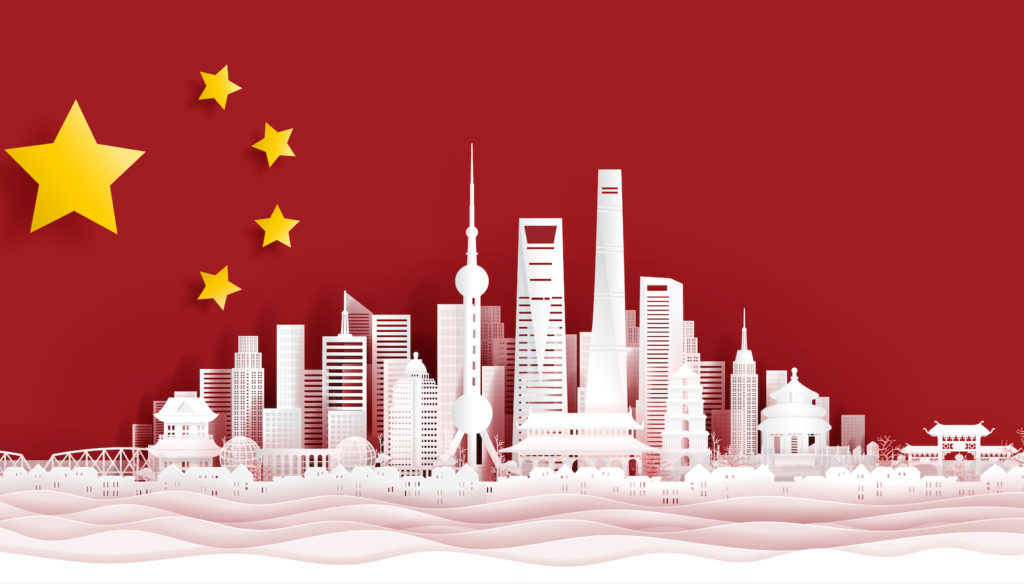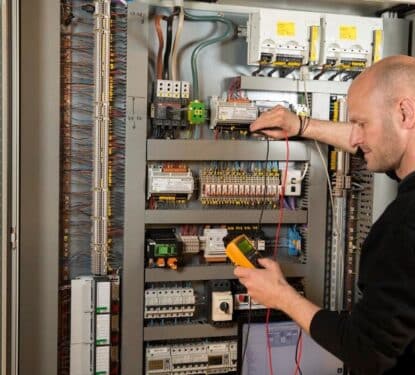China’s real estate sector is in crisis. In an effort to curb excessive borrowing by property developers and control runaway real estate price increases, the Chinese government began to crack down on developer debt in 2020. The market then suffered a downturn in 2021 due to the increased financial restrictions, while commercial sales and investment growth slowed. Several of the nation’s major real estate developers are now facing a liquidity crisis that may see some default on debt repayments, which would send shock waves through the wider economy during an already challenging pandemic. For the global smart building sector, the fate of the world’s biggest supplier and its biggest potential market hangs in the balance.
The tension in the market rose in September 2021 as real estate giant Evergrande defaulted on a debt repayment and warned of more liquidity problems. Evergrande was then revealed as China’s most indebted developer, holding some $300 billion in liabilities, and the government stepped in to help establish a risk management committee for the company. The following month, another major developer hit the headlines when HKEX-listed Modern Land formally asked investors for more time to pay back a $250 million bond. And, last week, Shanghai-based Shimao Group, known as China’s fiscally healthy developer, was downgraded by two leading credit rating agencies and is said to be considering selling property to cover debt repayments.
“For any government, overhauling a nationwide residential real estate market would be risky under the best of circumstances. Chinese President Xi Jinping is attempting it at a time when the economy is slowing, omicron is threatening his zero-Covid policy and relations with the outside world are increasingly fraught,” reads a Bloomberg article warning of state dominance of its real estate sector. “As that perilous combination takes a growing toll on Chinese financial markets, one question keeps popping up: What is Xi’s endgame?”
“Given the Communist Party’s opacity and its history of backtracking on property reforms, the answer is impossible to know for sure. But China watchers have begun sketching out a likely future for the real estate market that looks far different from its more than two-decade run of supercharging economic growth, household wealth, and government revenue,” continues the Bloomberg article. “In short, the days of blistering home-price gains and debt-fueled building sprees by billionaire property tycoons are set to fade. They’ll be replaced by a much more staid market where authorities are quick to clamp down on speculative frenzies and development is dominated by state-run companies earning utility-like returns.”
In 1978, when then Chairman of China’s communist party Deng Xiaoping opened the country up to the global market, the GDP per capita in China was around the same level as India at about $200. Today, China’s GDP is five times larger than that of its neighbor at approximately $10,000 and its economy grew from over $76 billion in 1981 to almost $16 trillion in 2020. The country’s booming real estate sector was supposed to be a reflection of its burgeoning middle class, a group that grew out of China’s economic boom over the past four decades. That middle class was supposed to have the standards to afford and demand smart buildings, as well as the scale to change the global smart building landscape by driving down prices and fostering innovation.
Instead, the booming real estate sector now seems like a reflection of unbridled debt, as the news is flooded with stories of millions of empty buildings amounting to as much as a fifth of China’s real estate as debt mounts. However, Evergrande, Modern Land, Shimao, and the other real estate majors are in no more danger than Fannie Mae or Freddie Mac during the 2008 US housing crisis - China has the capacity to bail out its economically structural corporations just as the US did. The nation’s middle class has really grown remarkably quickly, it will continue to grow and will have the spending power to seek smart building solutions at scale, but the real estate industry itself, namely the developers, will be restricted in meeting that demand.

Restrictions will no doubt limit real estate developers’ ability to borrow money or accumulate debt, at least from public sources and likely from the banking system too. This would be expected to reduce the construction of buildings and the rate of redevelopment by the private sector, two metrics that will not please the local smart buildings industry. As the capacity to provide smart buildings diminishes, so will the drive to sell them, which will impact marketing, user appreciation of the technology, and consumer demand. Whatever the scenario, these restrictions are likely to restrain private sector smart building development in China.
However, this is China, “restrained growth” means growth figures only double instead of triple the rates seen in Europe and North America. The Chinese government has the financial clout to overcome these issues without a significant impact on its economy, but almost all the impact that will take place will be focused on real estate. There, the government strategy is likely to include buying up huge amounts of private real estate from troubled firms. The 60-story Shimao International Plaza, one of the tallest skyscrapers in Shanghai, could reportedly be sold to the city's government-owned firms for more than $1.6 billion. This increased “nationalization” of real estate injects necessary funds but could change the demand for smart technology.
The Chinese government is the single largest buyer of smart building-related technology in the world for a range of building and city-scale projects, and represents over 50% of all business in China. The demand for video surveillance equipment in its ‘Sharp Eyes’ initiative, for example, far surpasses anything else in the physical security market and makes a significant impact on the cost of surveillance technology around the world alone. In China, the government is also a major player in “private” technology sectors, holding a 42% stake in Hikvision, for example, while providing the firm with favorable lending terms and debt facilities.
“Dahua and Hikvision alone generated domestic China revenues over $7 billion in 2020, the majority of which was through the sale of video surveillance equipment,” reads our brand new Physical Security report. “The average selling price of cameras is also significantly lower in China than in other markets due to intense price competition, meaning that on a unit basis, China is deploying more cameras annually than the US and more than the rest of the world combined. So much so that China is rapidly catching up to the US and Europe in terms of penetration stated in terms of the number of cameras per capita.”
What’s true for video surveillance will be true for occupancy analytics, energy efficiency, AI, or other proptech —China will continue to be a good market for building technology with or without a booming private real estate sector. In fact, more buildings being owned by the government is more likely to increase than reduce smart tech adoption. Even if these spaces are dominated by surveillance tech it will also have positive cost implications for most human-centric and environment-focused smart building technologies. Furthermore, the China private real estate majors are still big players in a huge market, just with the reins on for the coming years.
China is the world’s biggest supplier of smart building technology and still has the biggest potential market for smart building products. What happens in China’s domestic market has a significant impact on global economics and this real estate crisis, even if managed well, will likely have a noticeable impact on overall growth. However, the undeniable resilience of Chinese economic development and the nation’s continued attraction to smart technology segments should secure a strong future of proptech in China and around the world.



